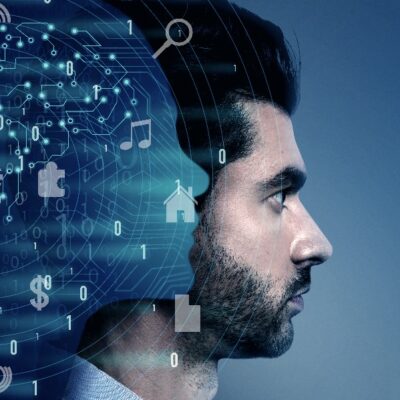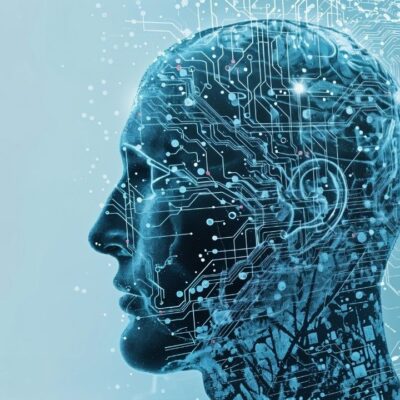Businesses today face the challenge of delivering personalized and efficient customer service without ballooning costs. AI avatar development offers a powerful solution. These digital assistants provide instant, interactive customer support, marketing engagement, and sales assistance. By leveraging AI, companies create memorable user experiences that drive growth and revenue. The market for AI avatars is booming, expected to rise from $5.59 billion in 2023 to over $67 billion by 2032. This growth reflects businesses’ desire to adopt smart, human-like digital agents.
In this article, we dive deep into AI avatar development — covering key features, development costs, technologies, and emerging trends. We also explain how Idea Usher, a leading development firm, can help you build advanced AI avatars that connect, engage, and convert.
Key Features of AI Avatar Development
Customization of Avatar Appearance and Personality
AI avatars are highly customizable. Businesses tailor avatars’ looks, voices, and personality traits to align with their brand identity. This enhances brand recognition and user affinity.
Natural Language Processing (NLP) Capabilities
AI avatars understand and respond to human language using NLP. They manage complex conversations in multiple languages, offering personalized and relevant responses.
Real-Time Interaction and Emotional Expression
AI avatars interact in real time with gestures, facial expressions, and vocal tone changes. Emotional intelligence creates empathy and trust, fostering deeper connections.
Integration with Emerging Technologies
Avatars integrate with AR, VR, and metaverse platforms to deliver immersive user experiences. This blend revolutionizes gaming, education, retail, and more.
Real-Time Language Translation
Avatars translate conversations live, breaking language barriers for global audiences.
Emotion Recognition
By analyzing voice and facial cues, AI avatars adapt responses to users’ emotional states, improving customer satisfaction.
Personalized Product Recommendations
Using customer data, AI avatars suggest products tailored to individual preferences, boosting sales and loyalty.
Virtual Try-On Experiences
In beauty and fashion, avatars offer virtual try-ons, enhancing online shopping and reducing returns.
Gamification Elements
Incorporate rewards, challenges, and leaderboards to increase user engagement through fun, game-like experiences.
Voice Cloning and Customization
Avatars can mimic brand ambassadors or celebrities, creating unique, recognizable voices.
Contextual Understanding
AI avatars consider user history, location, and current trends to deliver timely, relevant information.
Steps to Develop an AI Avatar
-
Define Purpose and Scope: Set clear goals and target audiences.
-
Select AI/ML Frameworks: Use tools like TensorFlow or GPT models for NLP and vision.
-
Develop NLP Capabilities: Enable understanding and natural responses.
-
Build Computer Vision: Add facial recognition and gesture analysis.
-
Create Realistic 3D Models: Design avatars with high-fidelity visuals.
-
Implement Animations and Expressions: Use motion capture and rigging.
-
Enable Learning and Adaptability: Use machine learning to personalize interaction.
-
Test and Refine: Gather user feedback and optimize performance.
Cost of AI Avatar Development
| Component | Cost Range (USD) |
|---|---|
| Research & Development | $3,000 – $15,000 |
| Frontend Development | $2,000 – $10,000 |
| Backend Development | $2,000 – $8,000 |
| App Features | $2,000 – $12,000 |
| Testing & Quality Assurance | $1,000 – $5,000 |
| Total | $10,000 – $100,000+ |
Factors affecting cost include AI model complexity, data quality, hardware needs, and development iterations.
Business Impact: Case Studies of AI Avatar Success
-
Zoom uses AI avatars to automate virtual meetings, improving productivity by 15-20%.
-
Villa offers language learning with avatars, increasing user retention by 40%.
-
UBS created a digital avatar of its chief economist, boosting client engagement by 25%.
-
Coca-Cola leverages avatars for personalized marketing, increasing sales by 15%.
-
Walmart uses avatars for customer service, reducing response times by 60% and increasing retention.
The field of AI avatar development is advancing rapidly, with several exciting trends on the horizon. These advancements are paving the way for more immersive and practical applications in various industries. Here’s a look at some key trends to watch for in the coming years:
1. Expansion into Metaverse Environments for Social and Commercial Uses
As the metaverse continues to evolve, AI avatars are becoming integral to its development. These avatars will not only enhance social interactions but also facilitate commerce. Virtual storefronts, AI-guided experiences, and avatar-led customer support are just some of the potential applications. The expansion of AI avatars into the metaverse is set to transform how people engage with digital worlds, creating more dynamic, interactive, and personalized experiences.
2. Enhanced Emotional and Contextual Intelligence
AI avatars are becoming more emotionally aware, capable of recognizing and responding to users’ emotional states. This level of emotional intelligence allows for more empathetic interactions, especially in sectors like customer service and therapy. Moreover, contextual intelligence will enable avatars to adjust their behavior based on a deeper understanding of the user’s environment, needs, and preferences, leading to more intuitive and meaningful exchanges.
3. Real-Time Multilingual Communication
One of the most significant advancements in AI avatars is the ability to communicate in multiple languages seamlessly. Real-time multilingual capabilities will break down language barriers and foster global communication. This will be especially useful in customer service, international business, and global social interactions, making avatars accessible to people around the world, regardless of language differences.
4. Integration with IoT for Richer User Context
As the Internet of Things (IoT) continues to grow, AI avatars will gain access to a broader array of user data. This integration will allow avatars to provide even more personalized experiences. For example, an avatar could adjust a user’s environment based on real-time data, such as adjusting the temperature or lighting based on their preferences, or offering relevant recommendations based on the user’s activities and context.
5. Increased Use in Healthcare and Education
AI avatars are expected to play a larger role in sectors like healthcare and education. In healthcare, they could act as virtual assistants for doctors and patients, providing health information, reminders, and emotional support. In education, AI avatars could serve as personalized tutors, providing one-on-one attention to students and adapting to their learning styles. These advancements in AI avatars will greatly enhance the quality and accessibility of services in these industries.
As AI avatar technology continues to evolve, it will offer new opportunities for businesses, educators, healthcare providers, and individuals alike, creating a more interconnected, efficient, and personalized world.
Why Choose Idea Usher for AI Avatar Development?
Idea Usher specializes in AI avatar development with over 500,000 hours of experience. Their expert team combines AI, NLP, and design expertise to build scalable, interactive avatars that enhance customer engagement and operational efficiency. From natural language understanding to facial expression animation, Idea Usher offers full-stack development tailored to your business needs.
Conclusion: Embrace AI Avatar Development for the Future
AI avatars are revolutionizing digital engagement across industries. They reduce costs, personalize interactions, and create memorable user experiences. By mastering AI avatar development and partnering with leaders like Idea Usher, businesses can deliver innovative, scalable solutions that meet modern expectations. Start your journey today and unlock the full potential of AI-powered avatars.


